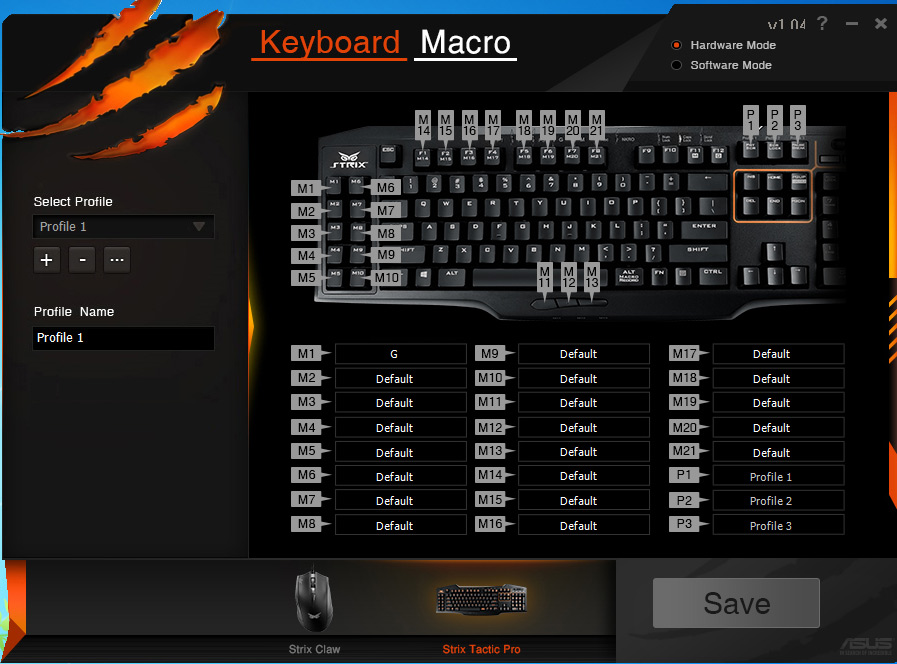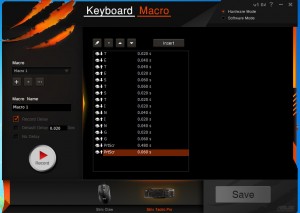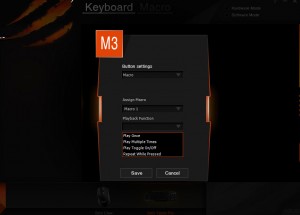At KitGuru, when we put a keyboard through its paces, we test it in a large variety of real world scenarios, involving gaming, extended typing and general office tasks – including photo editing.
I tested the Asus STRIX Tactic Pro over the course of a week, playing a number of different genres of games, as well as writing thousands of words on it throughout the course of day to day writing and personal projects.
So how does this keyboard stack up? Well, in practice it feels very much like a lot of other keyboards fitted with the same Cherry MX Red switches. For those of you that have used a mechanical keyboard before, that means that it is lighter and a therefore a little more springy than your black and blue switches and somewhat comparable to browns -but without that actuation feeling.
For those who have not used a mechanical board before, Reds are just about the fastest switches Cherry MX makes and therefore they are a common choice for gamers. They do not take a lot to press down and that can mean you can type exceedingly fast if you have quick fingers. That said, it can make you more prone to mistakes as a misstep with one finger is much more likely to press an errant key when it takes less force to actuate.
That is why for me, I prefer brown switches if given the choice, so while I enjoyed my time using the STRIX Tactic Pro, I would have preferred an alternate choice of switch. Fortunately then, if you decide to buy one of these yourself, there should be a choice of switch at point of purchase, letting you decide between brown, black, red or blue.

The software is clean and functional, though there are no lighting controls to speak of
When you are using third party Cherry switches in your keyboard design, it is what else you add that makes all the difference. Is the Strix Tactic Pro well equipped?
Firstly, there are more Macro keys than you will ever need – which is a good thing for that type of gamer. On top of the 10 dedicated macro keys you have on the far left hand side, there are eight extras added as a secondary function of the F keys and there are three others beneath the space bar.
Most of these are within easy reach , except for the M12 and M13 ones under the space bar, but that may be down to my smaller than average hands. Just expect to need a decent spread if you want to reach all of them without moving your hand. Part of me wishes however, that those extra macro keys did not protrude on their own ‘platform' from the main body of the board, as it means adding a third-party wrist rest would be pretty difficult.
With that in mind, I would have liked to have seen some sort of wrist rest supplied with the keyboard.
The use of the F keys to give added functionality is nice to see, as it saves space and gives plenty of extra keys for the MMO players out there. I cannot imagine many people who buy this board will need more than 20 macro keys – but at least there is the option.


Macro recording is simple and can be applied to keys with a variety of stipulations
The media keys are well implemented and I like the volume control wheel a lot as it makes fine adjustments quick and easy. The buttons do not feel as high quality as the rest of the keys on the keyboard and neither do the M11-13 keys, but since neither are being used particularly often, it doesn't prove to be a major issue.
Other notable features include the ability to record macros on the fly. I can't say this is a feature I would ever use, but there may be a user base who have been craving this option. I like the ability to turn on Gaming Mode – disabling the Windows key completely.
Switching between profiles and macro configurations is also handled by pressing the function key and the F11(M) key. Quick and easy. Likewise, turning on NKRO mode to allow for limitless simultaneous keypresses is great, especially if you want to play some retro emulator games without several gamepads.
None of these are big features, but they are the kind of thing that helps separate out a board at this sort of price range (£100).
The backlighting for the board is nice, albeit a little basic. It produces an adjustable orange glow and you can make it ‘breathe' in and out as you use it. There are no options to change colour or any other settings beyond that however, unlike some of the more expensive RGB keyboards currently available.
The only aspect of the lighting I was particularly disappointed with however, were the LED notifications for profiles and ‘locks'.
On the ASUS STRIX Tactic Pro, all of these are situated behind the F keys making them rather difficult to see. In actuality – to see the indicators in full, you need to be sat with a straight back less than a foot from the keyboard. In reality it can be difficult to not only read what the notifications are, but also to see the lights at all, unless you are in a darkened room.
This is not a deal breaker by any means, but it seems odd that with the added plastic at the front and top left/right, ASUS could not have added the indicators there, or just extended the area directly ‘behind' the keyboard to give them more room.
I also found the keyboard a little less grippy when raised into the angled position. It does not slide around when in use, but it might be worth being a bit less liberal with the polish if you plan to use this one in a heavy-handed manner.
 KitGuru KitGuru.net – Tech News | Hardware News | Hardware Reviews | IOS | Mobile | Gaming | Graphics Cards
KitGuru KitGuru.net – Tech News | Hardware News | Hardware Reviews | IOS | Mobile | Gaming | Graphics Cards



The interface is bad